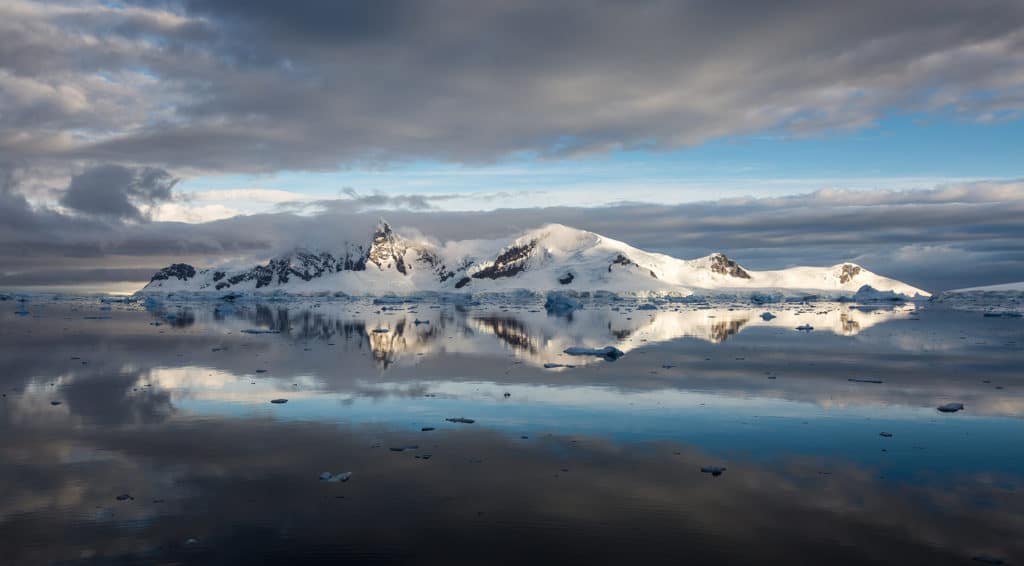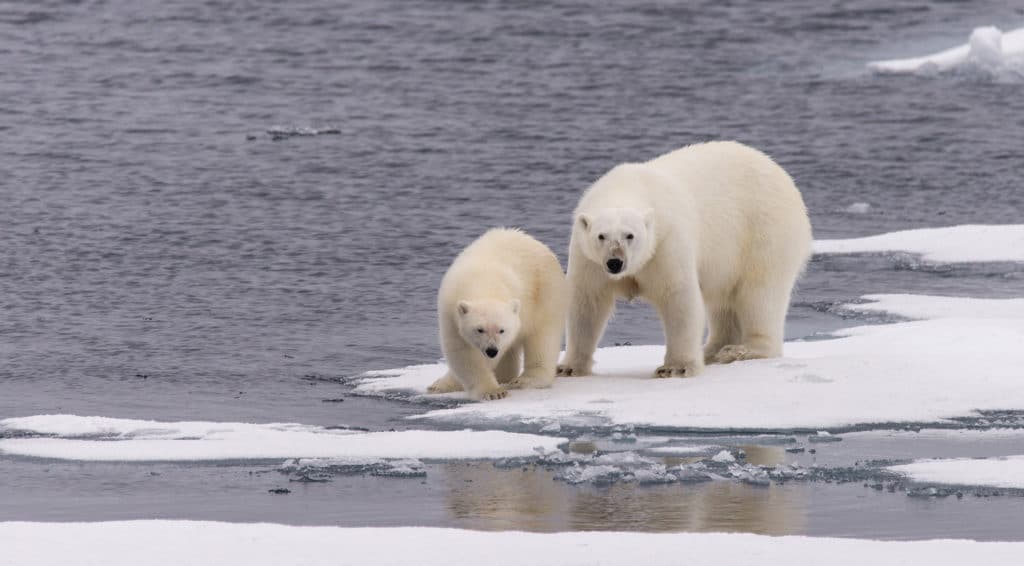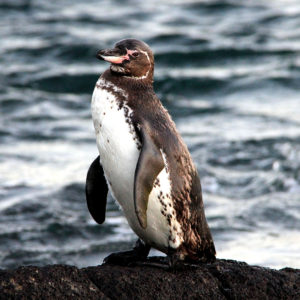Do polar bears live in Antarctica?
Polar bears live in the Arctic, but not Antarctica. Down south in Antarctica you’ll find penguins, seals, whales and all kinds of seabirds, but never polar bears. Even though the north and south polar regions both have lots of snow and ice, polar bears stick to the north. And that’s a good thing for Antarctic wildlife, because the Antarctic ecosystem would look very different if there was a sleek polar predator like the polar bear at the top of the food chain.

Why are there no polar bears in Antarctica?
The main reasons there are no polar bears in Antarctica are evolution, location and climate.
Polar bears evolved fairly recently
Bears as we know them evolved from smaller mammals (about the size of a sheepdog) about 30 million years ago, and polar bears evolved between 5 million and 150,000 years ago. While this may sound like a long time (and it is!), it’s a relatively short time geologically speaking.
Antarctica is isolated
Bears have spread across the world via land bridges and short ocean crossings. However, Antarctica has been separated from other continents by the vast Southern Ocean for about 45 million years – since before bears evolved. While polar bears are excellent swimmers, they would struggle to migrate to Antarctica. As they are adapted to a polar climate, the tropical latitudes would be a little too hot to handle. And crossing the famed Drake Passage could be a challenge, even for a strong swimmer like the polar bear!
Antarctica is cold
If bears evolved from small mammals elsewhere on earth, why not Antarctica? Scientists aren’t sure, but they think it may have something to do with how cold Antarctica is and how quickly it went into a deep freeze.
Scientists know that there were small mammals in Antarctica about 40 million years ago, and widespread plant life until about 2 million years ago (today there are only two flowering plants in Antarctica).
Millions of years ago, as glaciers spread across Antarctica, local mammals could have evolved into a species like the polar bear, or returned to the ocean, as seals and whales have done in the past. But they didn’t, and scientists aren’t sure why. Maybe there wasn’t enough marine life to support them, or the climate changed too quickly for them to adapt in time. Either way, isolated from the rest of the world, Antarctica’s mammals became extinct before they could evolve into a specialised marine mammal like the polar bear.
Perhaps the polar bear’s closest Antarctic relative is the Weddell seal. Both are carnivorous marine mammals, great swimmers and can live to about 33 years – but that’s where the similarities end!
Are there polar bears at the North Pole?
Polar bears can be found across the Arctic from the U.S. (Alaska) and Canada to Russia, Greenland, and Norway (Svalbard). They even make occasional visits to the Geographic North Pole, in the middle of the Arctic Ocean. The closest land to the North Pole is over 800km (497 mi) away!
The sea ice is the polar bear’s habitat. This frozen crust on the surface of the polar sea is always moving, and so are polar bears. They range across this white, ever-changing wonderland, hunting seals through cracks in the ice.
Exactly how far polar bears can roam from land depends on how much stable sea ice there is and how many seals are around for them to hunt. Polar bears can cover amazing distances at sea: they can swim 48 km (30 mi) regularly, and up to 354 kilometers (220 mi) at a stretch, before they need to find sea ice or land to rest. As sea ice cover and distribution changes over time, so do the areas polar bears can access.

Do penguins and polar bears live in Antarctica?
Penguins live in Antarctica (to the south), and polar bears live in the Arctic (to the north). While they inhabit similar polar habitats with lots of snow and ice, they have never lived together (except on the pages of children’s books or in captivity).
They did come close in 1936, when a polar explorer settled some king penguins and macaroni penguins in northern Norway, not far from the Arctic. However the penguins did not thrive in their new home, and today the northernmost penguin species is the Galapagos penguin, found on the Galapagos Islands near the equator.

How many polar bears are left in the world?
It is very difficult to estimate the number of polar bears in the world as they tend to travel alone across vast, remote Arctic expanses. An accurate head count would be very expensive and almost impossible.
In 2015 the International Union for Conservation of Nature (IUCN) estimated that there are approximately 22,000-31,000 polar bears left in the world and listed their population as vulnerable.
Find out how you can help support polar bears and protect their habitat. And if you’d like to join us for an expedition to the Arctic, to see the polar bear’s beautiful habitat for yourself, take a look at some of our upcoming Arctic trips.

Words by Nina Gallo, Aurora Expeditions’ historian and certified PTGA polar guide.
Nina has been drawn to the polar regions since her first otherworldly experience of the midnight sun in 2002. Since then she has spent time in far northern Canada, the Himalayas, the Alps and deserts in America and Australia, always seeking out quiet, wild corners to explore. She feels immensely privileged to travel to these places and shares her passions for the natural world, human stories and adventure with all the wonderful people she meets. Nina is the author of Antarctica, published by Australian Geographic in September 2020.
